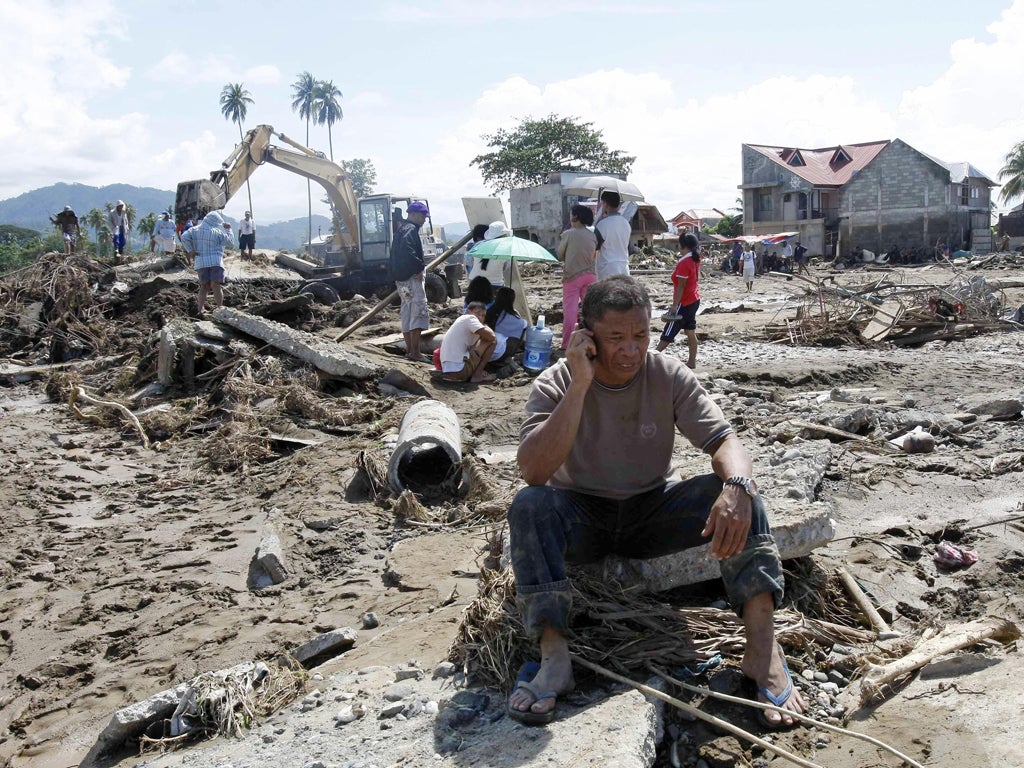The island that thought it was safe from typhoon

The island of Mindanao in the southern Philippines is generally considered out of the path of the 20 or so typhoons that strike the country each year. So despite the warnings, people stayed put, and were sleeping peacefully when a storm hit with devastating force on Friday night.
As Typhoon Washi slammed ashore, swelling rivers that turned into torrents of water and mud, entire houses were swept away with families inside. Last night the death toll stood at 652, with more than 800 people missing. Mortuaries were so overwhelmed that the army was drafted in to build coffins.
One family of nine survived by clinging to the tin roof of their home as it was washed out to sea after flash floods destroyed their village. After drifting for miles, they were rescued by a cargo ship. "There was a deafening sound followed by a rush of water," one of the survivors, Carmelita Pulosan, 42, told Reuters. "We found ourselves in the river, and the current took us out to sea. The current was very strong. God is really good to us. He saved my family."
Other residents of the worst-hit area – the coastal cities of Cagayan de Oro and Iligan, and surrounding villages – were not so fortunate. Amor Limbago, 21, rushed home after the floodwaters receded to check on her family. "I returned and saw that our house was completely gone," she told Associated Press. "There was nothing but mud all over and knee-deep floodwaters."
As a month's worth of rain fell on Mindanao in one day, water cascaded down the mountains, stripping them of earth and foliage. It then roared through the villages below, transforming them into muddy wastelands strewn with snapped trees and overturned cars. By yesterday the storm had blown away, leaving rescue workers struggling to find survivors and bring food and shelter to thousands of displaced villagers. In the mortuaries, bodies were stacked on top of each other in hallways; locals were urged to bury their own dead quickly.
Benito Ramos, head of the state disaster agency, said locals had been warned about the typhoon days earlier but – since Mindanao was rarely hit by tropical storms – had elected not to move to safer areas. Many of those who died lived in slum housing on an island wedged between two rivers in Iligan. "About 70 per cent of the houses on the island were washed into the sea," said Brigadier General Roland Amarille, head of an army taskforce in the city.
With many bodies unidentified, survivors scoured morgues and funeral parlours, looking for lost relatives. Edmund Rubio said he and his family scrambled up to the second floor of their house in Iligan as floodwaters engulfed the ground floor. Thirty of their neighbours, who lived in single-storey homes, also took refuge there.
* Authorities in Indonesia were yesterday struggling to rescue 200 asylum seekers, after their boat sank off the island of Java. By last night, only 33 people had been pulled from the water. The mostly Afghans, Iraqis and Iranians had been trying to reach Australia.
Join our commenting forum
Join thought-provoking conversations, follow other Independent readers and see their replies
Comments
Bookmark popover
Removed from bookmarks